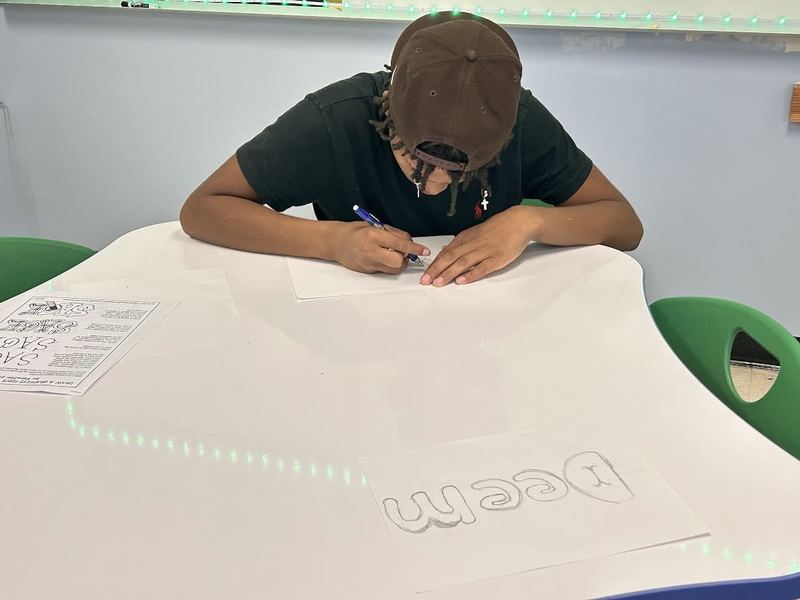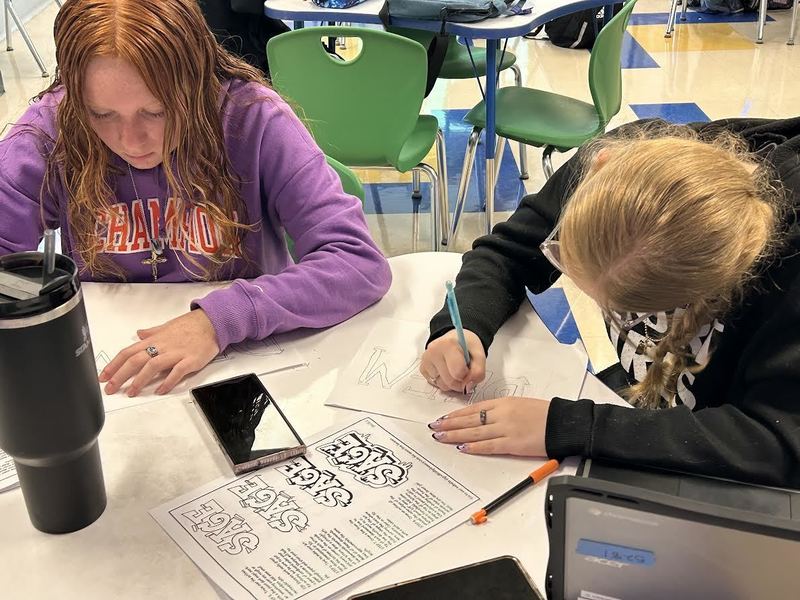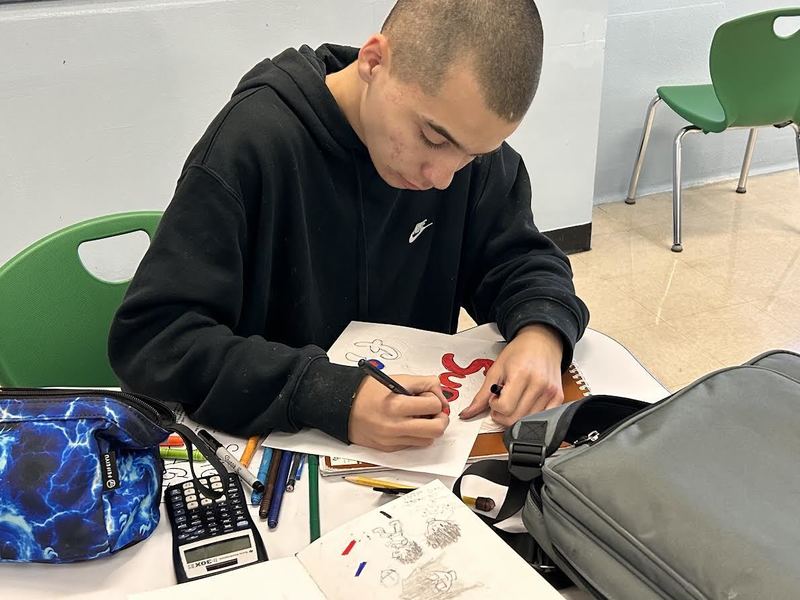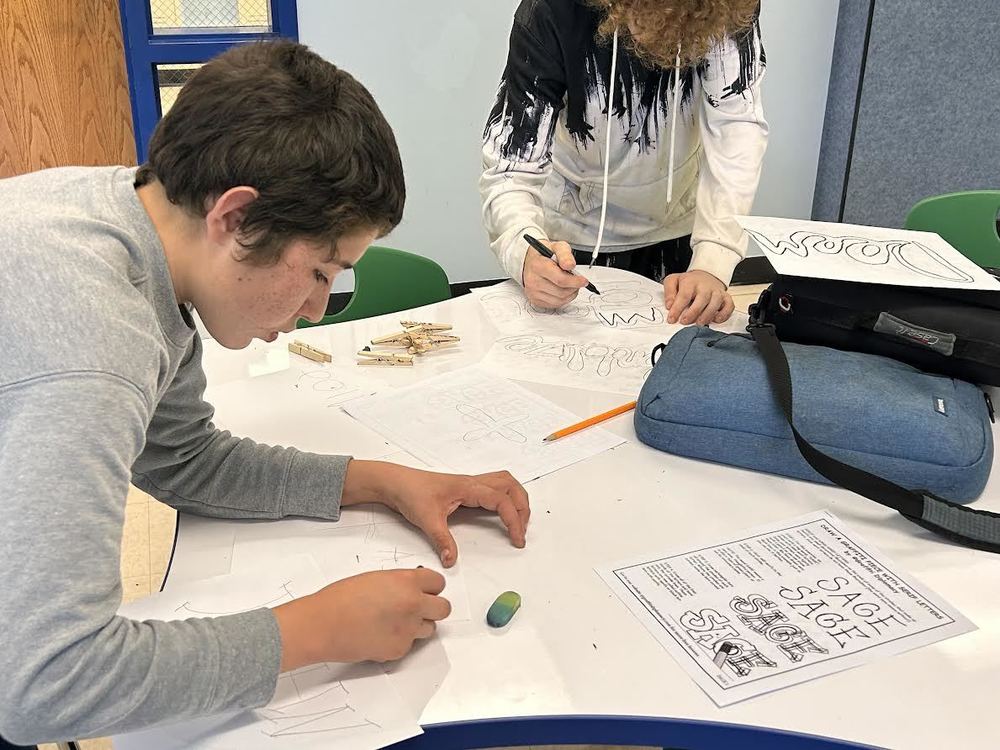Is graffiti an art or a crime?
Students in Jennifer Ramirez’s English class recently got to debate that question as they entered a unit on argumentative writing.
They have read multiple nonfiction stories, like ‘Make Memories & Leave No Trace’ about the national parks and how people are sketching into the stones instead of just taking pictures and they’ve been reading texts on what is defined as public art. They have watched videos to see things like the point of view from a shop owner who is opposed to graffiti versus the point of view from a graffiti artist.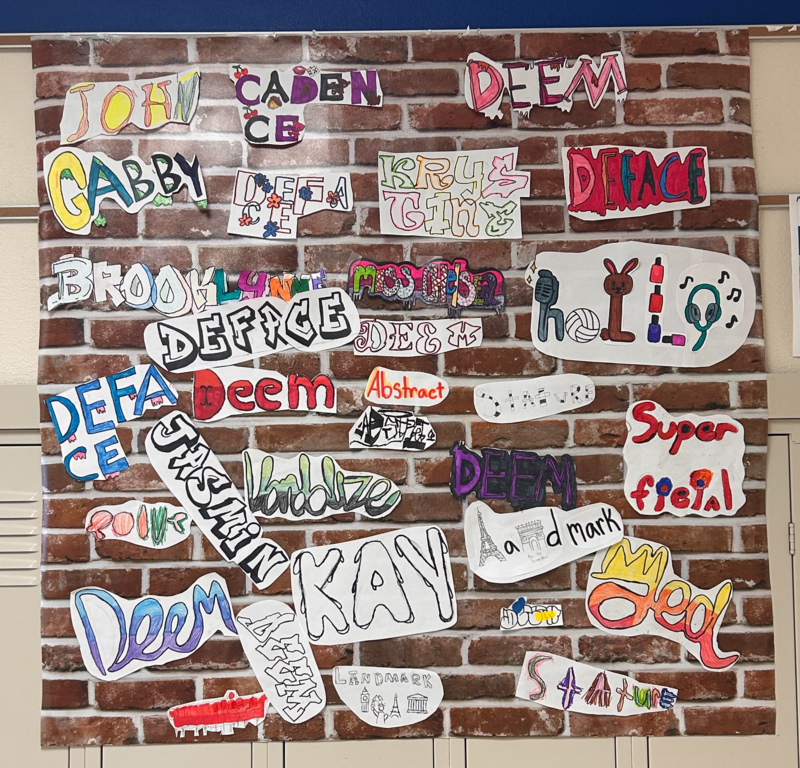
(Photo: Students created a faux graffiti wall for fun after completing their argumentative writing assignments on graffiti. For those interested, DEEM is a Brooklyn, NY based visual artist whose graffiti has been widely documented in publications and online).
The students then write an argumentative essay, based on everything they have gone over.
Students have been keeping a graphic organizer they make notes in after each reading or video, touching on both sides of the topic discussed, providing the evidence each side brings forward. Then, they write their own thoughts and arguments relative to each story.
“We’ve done this for every story. We’ve talked a lot about evidence and having to back up our thoughts,” Ramirez said.
Beginning in middle school in Parsons, there is a focus on using the R.A.C.E. method for constructed response writing: Restate the question; Answer the question; Cite relevant evidence; and Explain how the evidence supports your answer.
To further practice their argumentative writing skills, the students have also done silent debates. Students are divided into groups of two. One person had to be on the “Yes” side and one on the “No.” The only time they could talk is when they picked the topic they were going to write about. Ramirez provided a topic list they could choose from, but students were able to pick whatever topic they wanted.
For example, one pair chose the topic, ‘Should Teachers Assign Homework?” Another two debated school uniforms. Each pair has a sheet of paper on which they start by recording their topic and who is taking what stance.
“They had to write back and forth on their paper arguing their point, so they are practicing getting their thoughts onto paper,” Ramirez said. “At first some were like, ‘I don’t know what to do. I don’t know what to say.’ But once they got going, some filled up their whole pages with stuff.”
Most of the students really got into the assignment, she said.
She begins these methods with her sophomores where they have to write down information from a story and provide text evidence.
“Which is probably the hardest part, getting the evidence,” she said.
This is just one example of the many assignments students are doing that help provide them with these essential skills they need for college and life.
The Kansas Board of Regents last year implemented a statewide curriculum, being integrated at both high school and college-level, emphasizing critical thinking and research skills.
In Parsons schools, students build critical thinking and other core skills across a wide range of courses, including the arts, humanities, and social sciences. Communication is also a focus, and Ramirez said such assignments as these help reinforce that skill as well.
With such shared expectations, it makes it easier for students as they move across grade levels.
“They learn this is what is expected,” Ramirez said.